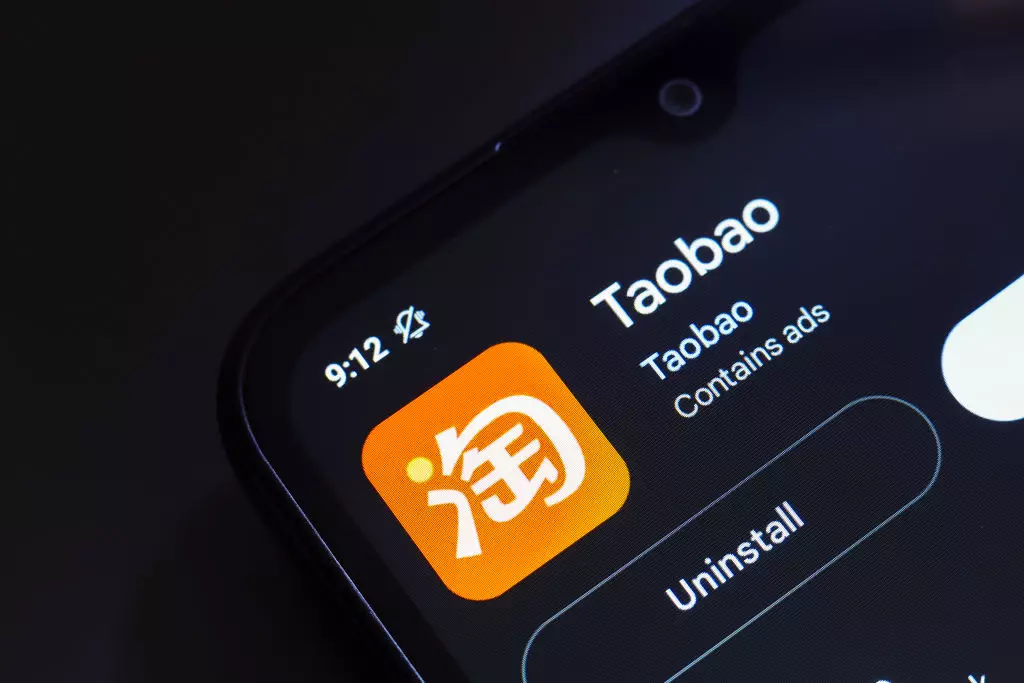The American retail environment is undergoing a transformation spurred by unexpected catalysts, including trade tariffs and the rise of e-commerce platforms originating from China. Apps like DHgate and Taobao have charged into the forefront of this evolution, positioning themselves not just as alternatives but as impactful players reshaping consumer behavior in the United States. The e-commerce boom reflects a complex interplay of factors, from escalating luxury prices to the powerful influence of social media platforms like TikTok.
What makes this wave of change particularly interesting is its dual impact: not only are consumers seeking affordability in a time of economic uncertainty, but they are also rapidly expanding their awareness of how business practices can mask the true origin and pricing of luxury goods. This newfound understanding is prompting many to bypass traditional retailers, opting instead for these direct-to-consumer models.
The Impact of Social Media on Shopping Preferences
In just a matter of days, both DHgate and Taobao have surged in popularity, propelled by viral TikTok videos elucidating the stark reality about luxury goods. These videos reveal that many high-end products sold in the U.S. are often manufactured in China, before being shipped to their respective countries for branding and packaging. With this insider perspective, consumers begin questioning the justification behind hefty price tags they’re usually confronted with at exclusive retailers.
TikTok creators have taken it a step further by pointing to these apps as a means to access the same products—often for a fraction of the price. This has led to a surge in downloads as consumers veer away from established giants like Amazon and Walmart, seeking alternative platforms that promise not only lower costs but also a more authentic shopping experience. The statistics are staggering, with Taobao experiencing a staggering 514% increase in downloads in just one month. Such growth signals not only adaptability but also the rising power of direct engagement through social media.
Consumer Psychology: Value, Quality, and Risk
Despite the allure of budget-friendly luxury, shoppers are perhaps entering a labyrinth of complexity when they choose to dive into these Chinese marketplaces. The impetus behind downloading apps like Taobao and DHgate is obvious; who wouldn’t want to save money while still obtaining high-quality products? However, these platforms come with their own set of challenges, making the term “buyer beware” all the more relevant.
The concern over product quality looms large. Given the vast assortment of sellers and the inherent variability in standards, the risk is substantial. As tempting as it is to purchase a designer dupe at an appealing price, consumers need to be meticulous; reading reviews and examining photos from previous buyers can mean the difference between a successful bargain and a regrettable impulse buy. It is not mere caution but a necessity when navigating these marketplaces.
The Real Cost of Direct Purchasing
While purchasing directly from these e-commerce apps may seem like a ticket to reduced expenses, consumers must understand that this strategy does not exempt them from the complexities of international tariffs and import regulations. Although these apps provide opportunities for lower-priced goods, the tariffs imposed by the U.S. government on imports from China remain a steadfast reality. As price consciousness grows, consumers might misinterpret the direct-to-consumer model as immunity from broader economic pressures when in reality, they are still participants in a market shaped by these factors.
Moreover, the attractiveness of purchasing directly from Chinese manufacturers begs the question of ethical consumption. Shopping habits are not merely transactional; they are reflective of encompassing cultural values and ethical considerations. As consumers flock to apps that promise accessibility, they may also inadvertently sidestep critical questions about labor practices, environmental impact, and sustainability.
The Future of E-Commerce in America
As we move forward, the landscape of e-commerce is likely to continue evolving rapidly. The success of apps like DHgate and Taobao exemplifies a paradigm shift where the lines between luxury, affordability, and authenticity become increasingly blurred. It is not just about price; it’s about what those prices represent in a world grappling with complexities in global trade relationships.
Ultimately, the emergence of these new shopping avenues heralds a potential reconfiguration of the American consumer’s expectations. The appetite for information-driven decisions can empower consumers with better purchasing strategies. As they navigate shopping in this new marketplace, they will be influencing not just their wallets, but potentially the future of retail itself.

